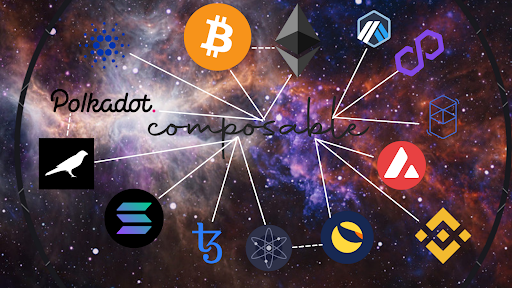If this year has shown us anything, it’s that decentralized finance (DeFi) has grown into one of the most relevant emerging ecosystems of today, and is likely to have a huge impact on the operation of banks in the future.
The spike in popularity of smart contract platforms has brought in a huge influx of new users, and platforms are doing what they can to attract as many of them as possible.
Ethereum’s market share is slowly slipping away
New platforms, such as Binance Smart Chain (BSC) have rushed in and taken the industry by storm by capitalizing on the flaws of popular platforms such as Etheruem. BSC has successfully focused on lowering transaction costs and providing a space for users to easily create decentralized apps (DApps) and DeFi products. With initial funding of only $100 million, BSC managed to attract over 100 million new DeFi users to its platform.
It came as no surprise, then, when it was recently revealed that Binance – the world’s leading blockchain ecosystem and cryptocurrency platform – recently received a $1 billion growth fund for BSC to accelerate the adoption of blockchain technology.
Ethereum, built using the Solidity programming language, is still by far the most well-known smart contract platform. Although it will likely remain that way for a while, it’s becoming increasingly clear that it now has actual contenders – and many of them might even work better.
Ethereum comes with its own set of problems which are becoming increasingly difficult to ignore. It is slow, it is expensive, and, to be blunt, it is not very useful outside of high-value DeFi transactions.
As a result, it is becoming increasingly clear that newer platforms such as Solana, Avalanche, and BSC are working hard to take its place by attracting users by offering faster and cheaper transactions to users – and they’re succeeding.
How do multichains actually work together
Essentially, a ‘multichain’ just refers to many different chains. Like a blockchain, a multichain is an immutable ledger. But unlike a blockchain, which is made up of blocks of data from a single protocol, it contains data from multiple blockchain protocols.
As a result, it creates a block that is made up of multiple other blocks. If a project is deployed on a multichain, this means that it must be deployed on at least two chains. These chains could include Ethereum, BSC, Avalanche, Solana, Polkadot, etc.
What are the benefits of multichains?
Although multichains are likely to be widely rejected by a large proportion of the Ethereum community because of their different ethos and lack of security guarantees, multichains have very practical user applications.
In order for assets to flow between independent chains, a “cross-chain” solution must be used. Essentially, this is just a tool that enables the transfer of assets between Ethereum and other chains. This optimizes the ability to synthesise between chains.
An increasing number of companies are beginning to see the potential of this. For instance, Composable Finance recently announced that it is building a cross-chain interoperable solution on Polkadot – the platform that has regularly been dubbed the “Ethereum-killer” (make of that what you will).
This will ultimately allow smart contracts to communicate and collaborate on all levels, and will remove the need for bridging (this is essentially a connection that allows the transfer of tokens and data from one chain to another), which is what Polkadot currently requires.
So far, Composable has been a quiet success, and recently closed a $7m funding round in June 202. More recently, the team joined forces with Polygon in order to integrate Polygon’s scaling solution into its layer 2 bridge link.
The main benefit of multichains is that they shift what was previously a very fragmented, complex series of chain to chain movements to a seamless, uninterrupted process. The process will become so seamless that the end user will become unaware of which chain they are operating on. Right now, this is almost unimaginable.
The ability to use multichains would have huge implications for blockchain technology – in particular, the DeFi industry. Interoperable blockchains, for instance, would enable the transfer of data between banks not only possible, but a secure, fast process. Given how relevant DeFi has become within such a short space of time – let alone how much more relevant it will become in the future – this is huge.
Ultimately, multichain solutions have the potential to remove many of the existing blockchain complexities, and to transform blockchain technology from what it is today into an essential, high-growth industry.
A look to the future of the multichain universe
If the rise of multichains reveals anything about blockchain technology, it’s that it isn’t a “winner takes all” world. Many of these solutions aren’t competitors to Ethereum as much as they are compatible with Ethereum.
The increasing popularity of multichain solutions have made it more obvious than ever that interoperability is necessary. In order to build collaboration with one another, it is vital that disparate datasets can cooperate.
By creating community around their products and facilitating successful partnerships with key supporters, entrepreneurs can leverage the so-called “multichain universe” in order to feel empowered and accelerate their blockchain projects.
Disclaimer: This article is provided for informational purposes only. It is not offered or intended to be used as legal, tax, investment, financial, or other advice.
Credit: Source link












































